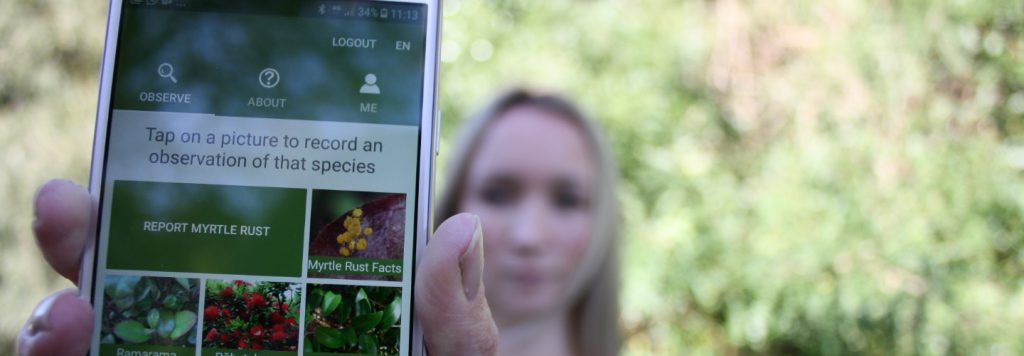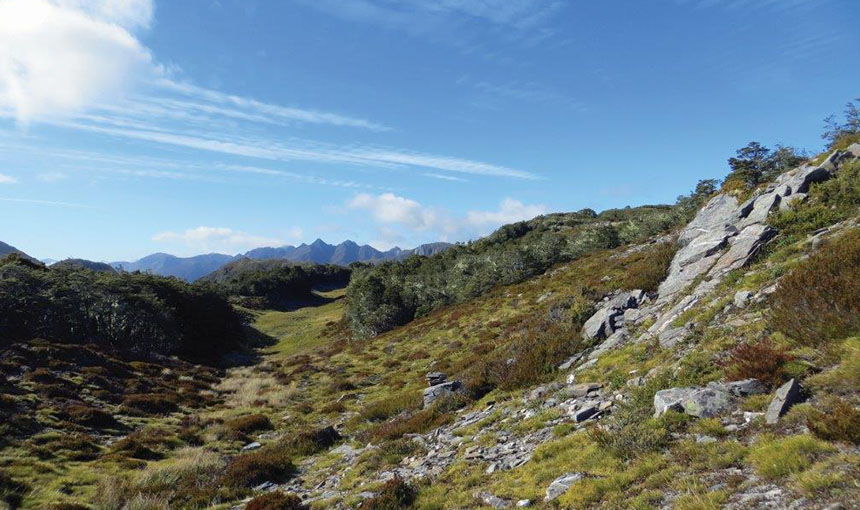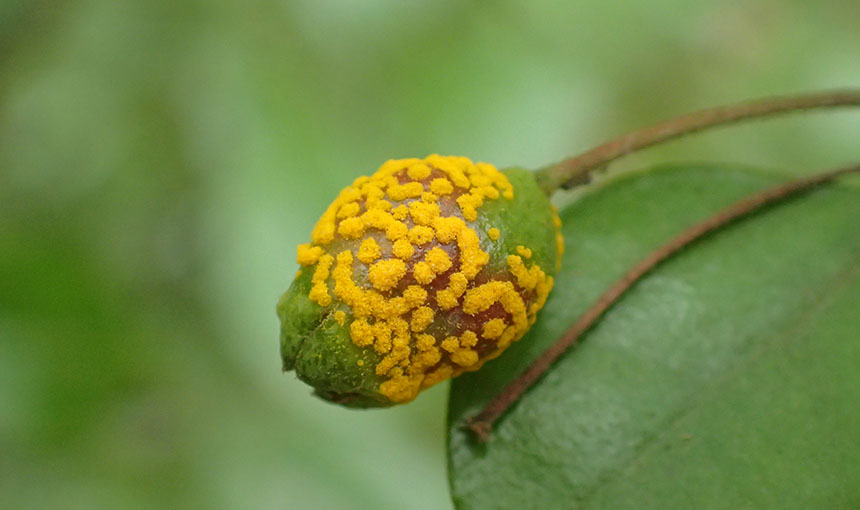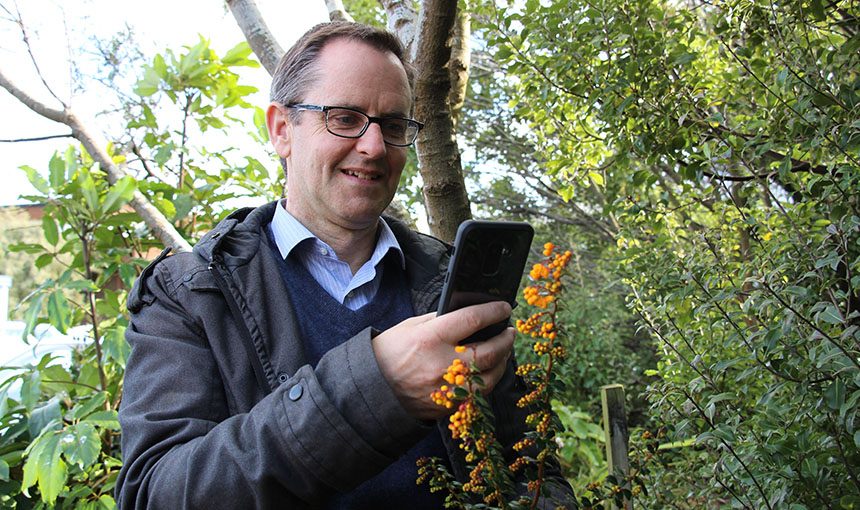Mobile apps to keep New Zealand safe
Mobile technologies are being developed to help New Zealanders report suspected biosecurity threats, with the first step being a bilingual app that helps identify myrtle rust infections.

As part of this BioHeritage Challenge project, Dr Stephen Pawson from Scion is leading a team that has developed the Myrtle Rust Reporter app for observing common host plants that may be susceptible to myrtle rust (Austropuccinia psidii).
The app, available in English and Reo Māori, was released in November 2017 and is being used to report potential infestations of myrtle rust. This will support long-term management of the fungal disease that’s threatening New Zealand’s native species including pōhutukawa, ramarama, northern and southern rātā, and mānuka.
The Myrtle Rust Reporter app is just one developed so far by Stephen and his team, who are working with central and regional government, Māori, and primary industries to create mobile technology tools that protect New Zealand from biosecurity threats.
This project contributes towards BioHeritage’s goal of creating a world-class biosecurity system for Aotearoa.
This two-year programme aims to provide an enduring and flexible model for a fast, easy-to-use system that can be used to identify, report and prompt immediate responses to plant and animal pests.
Issues & Impacts
A business case submitted to Biosecurity New Zealand to support investment in software development has been accepted. Biosecurity New Zealand has contributed funds and data to the project, while Environment Southland and a number of primary sector industry organisations have also provided support. Work has now started on the development of a minimum viable software product along with case studies to evaluate it.
Any future apps developed will draw on central and regional government agency data to focus surveillance efforts on high-priority threats as they emerge. Iwi partners Te Tira Whakamātaki (the Māori Biosecurity Network) and Wakatū Inc. will participate in the co-development process to incorporate mātauranga Māori (Māori knowledge).
In February 2018, a post-doctoral researcher joined the team, helping to extend the size, scope, investment and capabilities of the project.
This project contributes toward BioHeritage’s goal of future-proofing New Zealand’s biosecurity system from threats posed by weeds, pests, plant pathogens and other drivers of global environmental change.
Publications
Marzano, M., Allen, W., Haight, R.G., Holmes, T.P., Carina H Keskitalo, E., Langer, Lisa E.R., Shadbolt, M., Urquhart, J., & Dandy, N. 2017. The role of the social sciences and economic in understanding and informing tree biosecurity policy and planning: a global summary and synthesis. Biological Invasions 19(11): 3317-3332. DOI:10.1007/s10530-017-1503-4
Research Partners
BioHeritage’s role is to break down barriers between organisations and individual scientists by coordinating and focusing the research of top scientists from our 18 Challenge Parties.
This project is being driven by Challenge Party Scion, which is working closely with Lincoln University.


